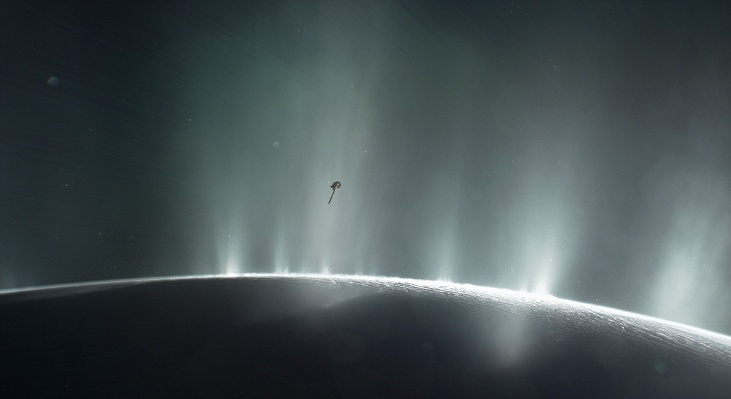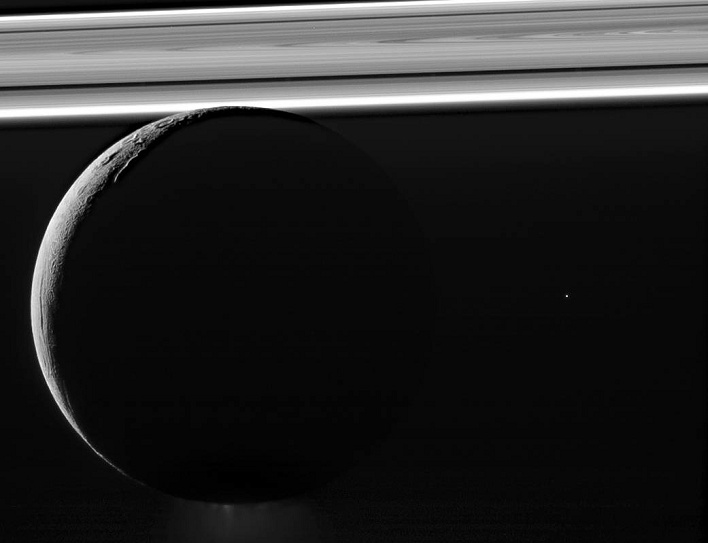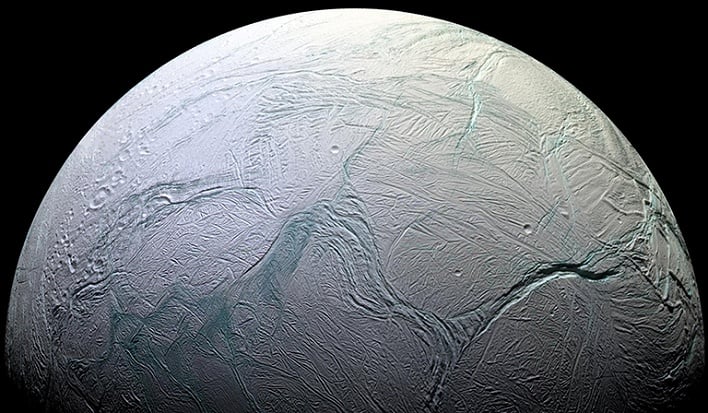Researchers Propose Mission To Find Extraterrestrial Life On Saturn's Icy Moon Enceladus

NASA's Cassini spacecraft concluded its historic 13-year mission of exploring Saturn and its moons by plunging into the atmosphere of the gigantic planet. Thomas Zurbuchen, Associate Administrator for NASA's Science Mission Directorate at NASA's Headquarters in Washington stated that "Cassini's discovery of ocean worlds at Titan and Enceladus changed everything, shaking our views to the core about surprising places to search for potential life beyond Earth." Now, a team of researchers want to send another spacecraft back to Enceladus to delve deeper into the possibility of finding alien life.

The methane, along with other indicators of molecular life, were detected as Cassini passed through giant water plumes that were erupting from the surface of Enceladus. The plumes originate from being "squeezed and tugged" by Saturn's enormous gravitational field. Using this information, a team of scientists calculated that if life could have emerged on Enceladus, that it could explain why the icy moon is "burping up methane."
"To know if that is the case, we must go back to Enceladus and look," remarked Regis Ferriere, senior author of the new paper and Associate Professor in the University of Arizona Department of Ecology and Evolutionary Biology.

"On our planet, hydrothermal vents teem with life, big and small, in spite of darkness and insane pressure," Ferriere explained. "The simplest living creatures there are microbes called methogens that power themselves even in the absence of sunlight."
Antonin Affholder, a postdoctoral research associate at the University of Arizona added, " Enceladus' biosphere may be very sparse. And yet our models indicate that it would be productive enough to feed the plumes with just enough organic molecules or cells to be picked up by instruments onboard a future spacecraft."
Ferriere explained that due to the possibility of life on Enceladus being very sparse, there is still a good chance that a spacecraft would not find enough organic molecules in the plumes to definitively conclude that life exists there.
Affholder concluded by stating, "The definitive evidence of living cells caught on an alien world may remain elusive for generations. Until then, the fact that we can't rule out life's existence on Enceladus is probably the best we can do."

